Advantages And Disadvantages Of Underfloor Heating – Is It Worth Getting?

Your home should be your sanctuary from the outside world.
It should be a place where you and your family can gather and feel comfortable. But when the winter rolls around and you don’t have efficient or effective heating, your home could feel like anything but your castle.
Heating is a problem for many American homes. And with the rising cost of natural gas, it’s no wonder that so many people are looking to alternative heating methods.
This is where underfloor heating comes on the scene.
Underfloor heating (sometimes referred to simply as UFH or dry underfloor heating) is a type of electric heating system. The heating elements – usually wires – are installed under the flooring of your home.
Underfloor heating systems use radiant heat to warm up a room or an entire house.
With an electric underfloor heating system, all you need to do is turn the heating element on and radiant heat will emit evenly from the ground up.
Underfloor heating was once viewed as a luxury but now, systems are so efficient and effective that many homeowners are installing them as their main source of central heating.
Underfloor heating systems can truly be useful because the radiant heat warms up the people and objects in a room without relying on air circulation which can be criminally inefficient.
Many people have found that underfloor heating systems are actually more affordable to run than central heaters and furnaces.
However, not every situation is right for underfloor heating. Like all heating systems, UFH has some pros and cons that you need to consider before making a decision.
In the following article, we will help you sort through the potential upside and shortcomings of underfloor heating.
Underfloor Heating Overview
Underfloor heating can be affordable to install and run.
However, you should be aware that there are different types of UFH systems and some are more expensive than others. These types of systems also typically work better in some rooms than others.
How Effective is Underfloor Heating At Warming A Room?
One of the things that draws people to UHF systems is that it warms up a room (and the people in it) quicker than central heating.
That’s because UFH systems use radiant heat as opposed to relying on air circulation which can take time. Underfloor heating is generally effective for warming a room quickly and evenly.
Because there is an array of heating elements that is installed across the whole floor, UHF systems aren’t susceptible to cold spots. The entire floor is covered and heat rises upwards from it.
And since warm air naturally rises, UFH systems offer more efficient coverage because the heat comes from the bottom of the room and naturally rises and cycles through to the top.
And since the heating element is spread across the whole floor, it doesn’t matter how large the room is. Unlike traditional heaters, UFH systems heat even the largest rooms evenly and quickly.
Electric Vs Water Underfloor Heating
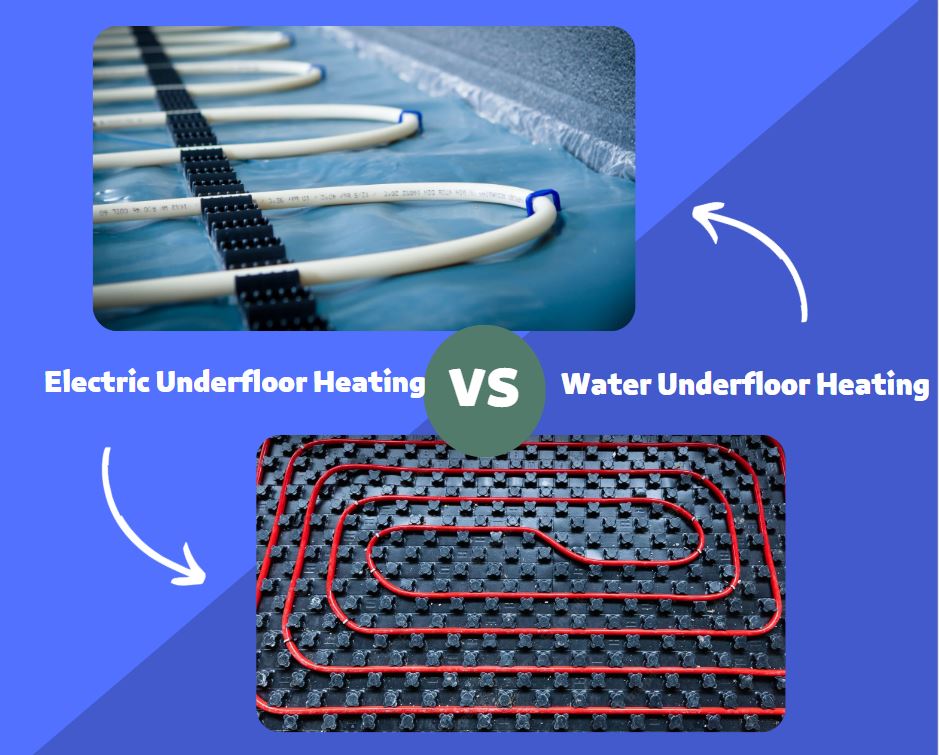
In addition to electric UFH systems, water underfloor systems are also popular.
Water-based UHF systems utilize a series of pipes that are installed over the subflooring and connected to a boiler. Water is heated and runs through the network of subfloor pipes in order to heat the room.
Water Underfloor Heating Pros & Cons
Pros:
- May be cheaper to run than electric systems
- Maintains room warmth longer
- Less heat is required to warm a room
Cons:
- Pipes may leak directly onto the floor and subfloor
- Higher installation costs
Electric Underfloor Heating Pros & Cons
Pros:
- Relatively inexpensive to install
- Quick room warming
- No boiler required
Cons:
- Room warmth disappears almost as quickly as you turn the system off
- Not safe for some flooring types
Underfloor Heating Quick Facts
- Uses radiant heat
- Water-based or electric heating element
- Installed over the subfloor
- Operates at 84 degrees Fahrenheit or lower
- Can be used in individual rooms
- Can be used for whole-home heating
Is Underfloor Heating Better Than Radiators?
A lot of people would say so.
One of the reasons why underfloor heating may be better than radiators is that they don’t need to operate at such high temperatures. Radiators typically need to reach a temperature of 160 degrees Fahrenheit or higher in order to effectively heat a home.
Underfloor heating systems usually only get as hot as 84 degrees which means that they are usually more eco-friendly and cost-effective than radiators.
Advantages of Underfloor Heating

No Cold Spots
– UFH systems don’t create cold spots in a room. The entire floor is covered and radiant heat rises upwards to warm the whole room side to side
Can Be Split Into Zones
– Of course, you don’t have to install UFH in every room of your house. You can split the systems into zones or rooms. You can even use them in conjunction with existing heating sources.
Easy to Install
– Electric mat systems can be easily installed. In fact, many DIY enthusiasts are able to install these UFH systems themselves.
Affordable Installation
– Of course, the system you choose and the contractor your work with will play a part; but in general, electric UFH systems are affordable to install.
Energy Efficiency
– It is estimated that an underfloor heating system is 25% more energy efficient than a radiator and 40% more energy efficient than a heat pump.
Reduced Heating Costs
– Because these heating systems are more energy-efficient, that will also be more affordable to run.
Increased Home Value
– Last but not least, an underfloor heating system may actually increase the market value of your home.
Disadvantages of Underfloor Heating
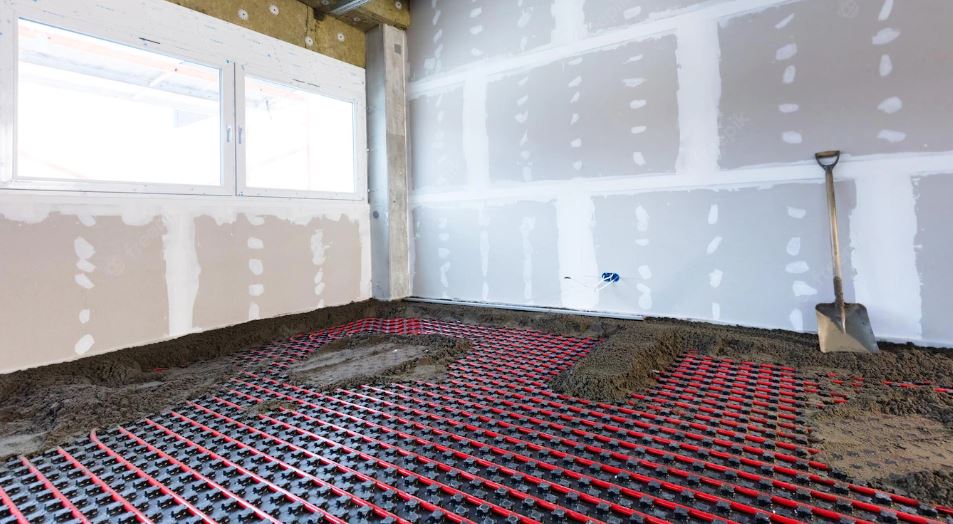
Installation Costs
– This applies more to water-based systems than electric systems. Water-based systems can be expensive to install because of the intricate piping that is usually required.
Installation Time
– While some electric underfloor heating systems can be installed in a half hour, water-based systems can take multiple days to install.
Certain Furniture Should Be Avoided
– For the most part, you shouldn’t put any flat-bottomed furniture on the floor where a UFH system has been installed. Doing so can limit airflow causing hotspots in the floor which can lead to flooring damage.
Can Be Difficult to Retrofit
– Going back and making additions or adjustments to an existing UFH system can be difficult.
May Increase Floor Height
– Depending on the type of system you have installed, a UFH system can actually raise the height of your flooring which can make fixed-ceiling rooms feel smaller.
Difficult Repairs
– Identifying where electrical UFH systems have failed may be very difficult.
Flooring Concerns
– UFH systems won’t work with certain types of wood flooring. Some contractors will also advise against installing this kind of system into vinyl floors.
May Need Other Heating Sources
– In certain situations, a UFH system may not be enough to heat an entire home which means you may need additional heating sources.
The Best Rooms to Use UFH
- Bathrooms
- Kitchens
- Home Office
- Garage
- Basements
Best Floor Types for UFH
Tile, timbers and carpet flooring all work really well with UFH because they act as conduits for the radiant heat and there are no hotspot risks with these kinds of floors.
Common Underfloor Heating Problems
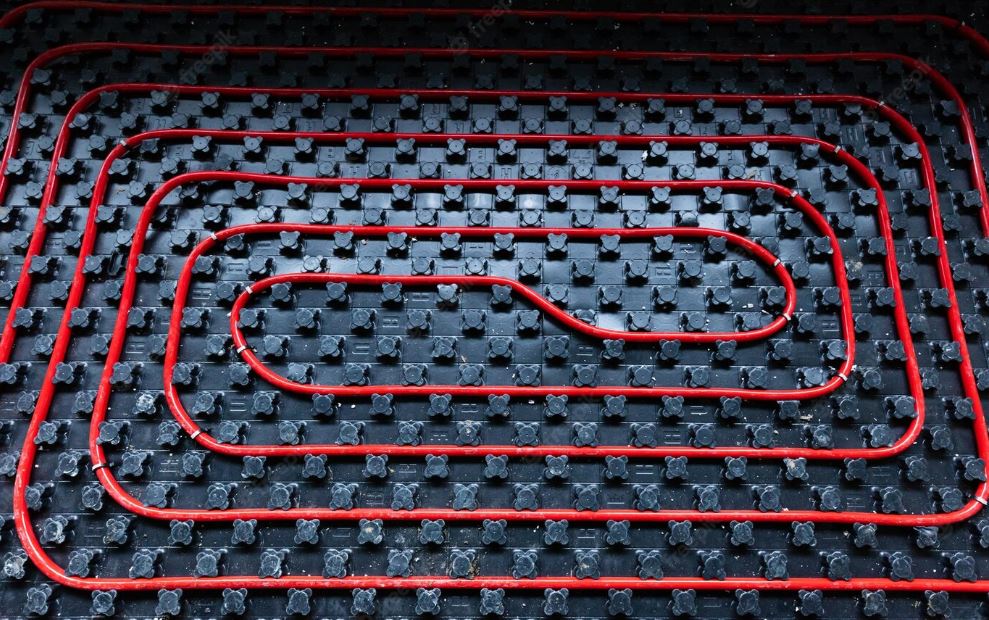
Certain Zones Not Heating
– If certain rooms or parts of the floor aren’t heating up, it could be a leak if you have a water-based system. It could also be an electrical issue.
Thermostat Issues
– Sometimes you will see an error message on the thermostat when there is an issue. In most cases, you can simply reset the thermostat to clear the error.
Thermostat issues are common but the fix may be as simple as changing the batteries or adjusting the settings. Refer to the owner’s manual to confirm that you are using the correct settings.
Air in the System
– This problem applies to water-based systems. Sometimes, air can get into the pipes and get trapped there affecting the heating capacity. If this happens, you will need to bleed the system by opening the valves to release air and some water.
Wiring Issues
– Wiring issues are also common in electrical UFH systems. This could come in the form of a faulty connection in the thermostat, actuator or the wiring board. In this case, you will most likely need the assistance of an electrician.
Is Underfloor Heating Worth Buying?
As long as you have it professionally installed, underfloor heating systems can save you a lot of money and are usually worth the investment.
You just have to be sure that you have compatible flooring and carefully assess the pros and cons of each kind of system (water-based and electrical).
Who Should Get Underfloor Heating?
If you have tile or carpeted flooring you should consider installing underfloor heating.
Also, if you would like to save money on your heating bills, UFH systems offer a unique and viable solution. Natural gas prices vary by region. If you live in an area where natural gas is expensive, you may also want to consider an underfloor heating system to save money.
The Best Three Underfloor Heating Mats
Heatwave Store – 20 Sqft Electric Floor Heating System
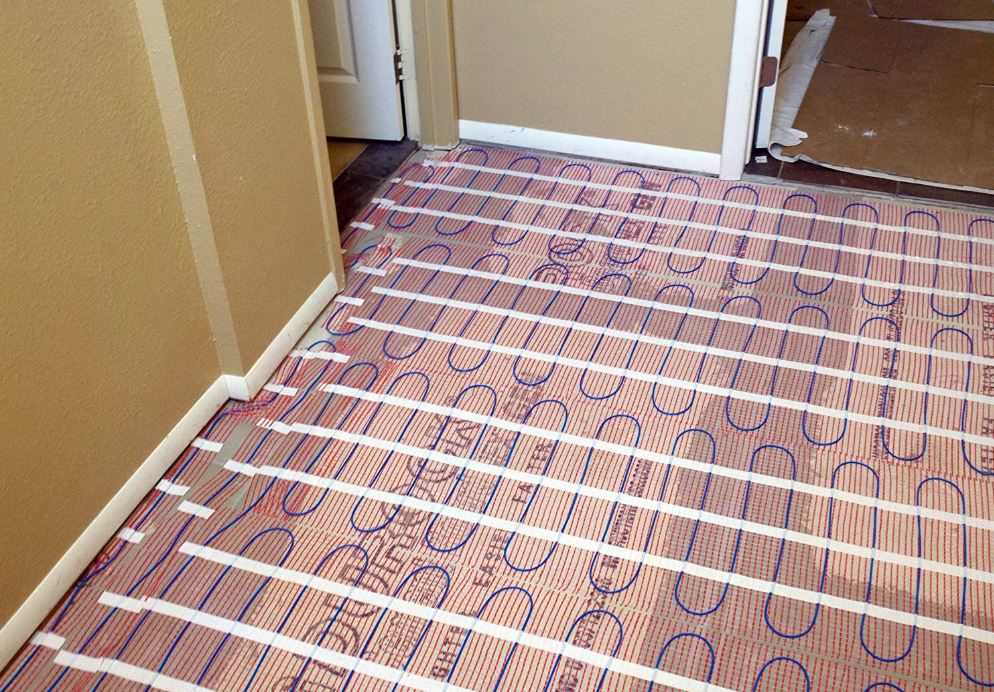
As far as installation goes, it doesn’t get much easier than the Heatwave Store – 20 Sqft Electric Floor Heating System.
The mat itself is 20 inches wide and 12 feet long and it comes with a programmable thermostat.
While you can’t cut the mesh, you can remove wires from the mesh to help get around obstacles and fill in corners of the room.
The Heatwave Store – 20 Sqft Electric Floor Heating System also comes with a 10’ sensor cable.
The programmable thermostat can be set to automatic, manual or comfort mode and has 4 custom program modes.
The temperature range of the system is 41 degrees Fahrenheit to 104 degrees. Overall this is a very easy system to install and works well in dry conditions.
Pros
- Sturdy cable
- Helpful backer mat makes it easy to lay the array flat
Cons
- Fixed size
Overall Score: 98/100
Check Out More Reviews Here:
Schluter DITRA HEAT DHEKRT12056 37.5 SF120V KIT
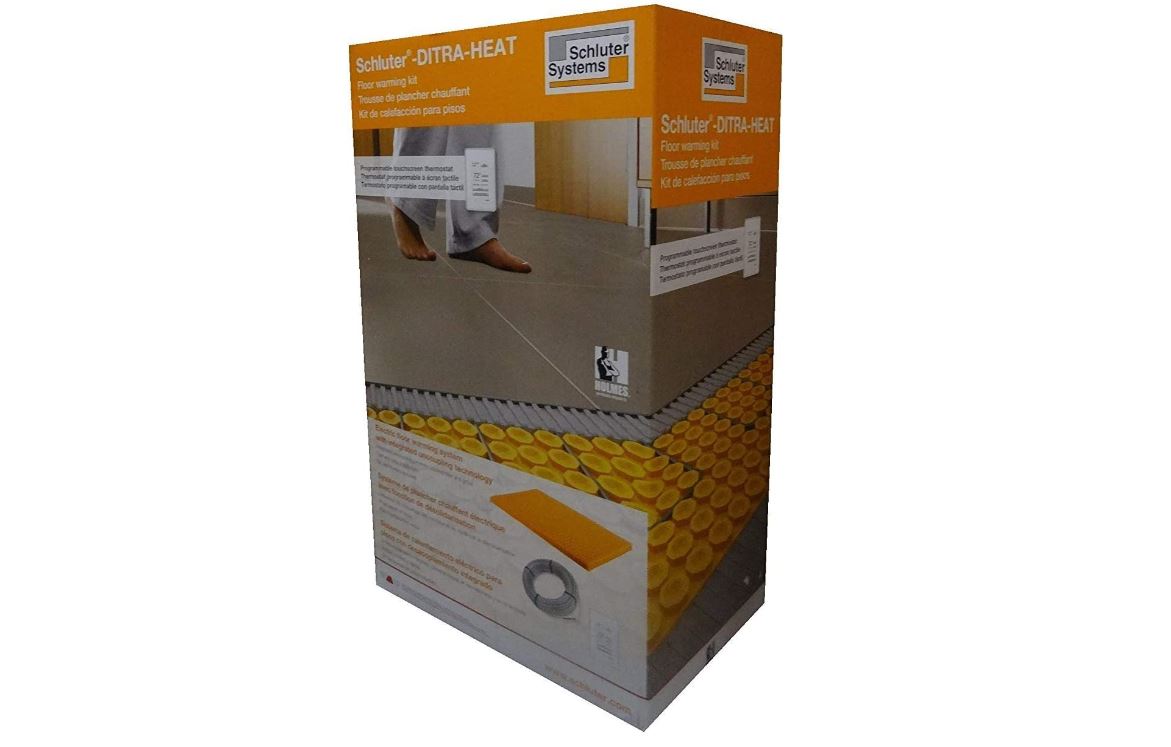
The Schluter DITRA HEAT DHEKRT12056 37.5 SF120V KIT was designed specifically for tiled floors.
So if your bathroom, kitchen or any other room in your house has tile floors that you would like to keep warm, this system may be ideal for you.
The whole system includes the heat mat, a programmable touchscreen thermostat, a heating cable and two floor sensors.
The manufacturers also claim that this heating system will protect your grout and tiles from breakage.
And while the Schluter DITRA HEAT DHEKRT12056 37.5 SF120V KIT system is not specifically designed to heat the room, in smaller rooms, it certainly does provide radiant heat beyond just the floor.
It is a bit on the pricey side but it is fairly simple to install and you get the cool, modern touchscreen thermostat as well. It also comes in a variety of sizes to accommodate different rooms.
Pros
- Great for tile flooring
- Thermostat is easy to set up
Cons
- The mat can’t be cut or adjusted
Overall Score: 94/100
Check Out More Reviews Here:
SunTouch TapeMat Electric Under Floor Heating Mat

For anyone who would prefer to handle the installation themselves, the SunTouch TapeMat Electric Under Floor Heating Mat would be a great choice.
The installation of this heating mat is incredibly simple as you can cut the mesh to easily adjust to the contours and corners of your room.
The mat adheres to the subfloor with double-sided tape so no special tools or materials are required. This is a 30 square foot heating mat. It’s 2 feet wide and 15 feet long.
You can get it in a wide variety of lengths ranging from 5 to 40 feet but it will always be 2 feet wide.
The SunTouch TapeMat Electric Under Floor Heating Mat works with a wide variety of flooring types too including tile, wood and laminate.
The manufacturers claim that it works for stone flooring as well but from our experience, it really struggles to provide adequate heating with stone floors.
Pros
- Very easy to install
- Fits all room sizes
Cons
- Not great for stone flooring
Overall Score: 95/100
Check Out More Reviews Here:
Underfloor Heating FAQs
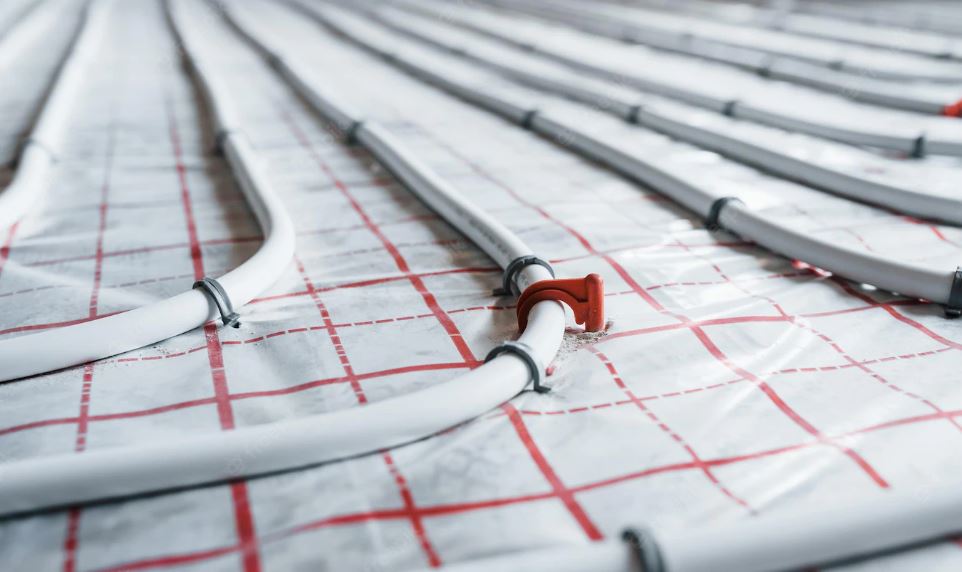
Can underfloor heating cause health problems?
There are no major health concerns related to underfloor heating.
What is the downside of underfloor heating?
One of the downsides to underfloor heating is that it may cause hotspots in rooms where another heating source is present.
For instance, if you have a wood-burning stove in your living room and you install a UFH system, it can get very hot in the area around the stove. The same is true of other heating sources like radiators.
Is underfloor heating a fire risk?
The only way that underfloor heating can pose a fire risk is if they are covered with unsuitable materials like vinyl flooring and flat-bottomed furniture. However, even in these cases, the risk of fire is very low.
Should you turn underfloor heating off at night?
In especially cold temperatures, underfloor heating systems can be left on all night to help keep the room or house warm.
Can I put furniture on top of underfloor heating?
As long as it doesn’t have a broad, flat bottom.
Does underfloor heating use a lot of electricity?
When used regularly, no. In fact, it can consume 25% less energy than a traditional radiator.
Is it a good idea to have underfloor heating?
If you want to lower your heating bill and prefer quick and even heating, an underfloor heating system can be well worth the investment.
How long will underfloor heating last?
Underfloor heating systems have a reputation for lasting a very long time. In fact, if your system was properly installed and maintained, it can last for 50 years or more.
Is underfloor heating better than radiators?
In general, underfloor heating systems can save you as much as 25% on your heating bill when compared to a radiator.
You should also compare the lifespan of a radiator to that of a UFH system. Most radiators last only 12 years while UFH systems can last 50 years.
What floor is best for underfloor heating?
Tile flooring, carpeted flooring and certain types of wood flooring are ideal to pair with UFH systems.
Does underfloor heating work with carpet?
Yes. In fact carpeted flooring works very well with UFH systems – especially synthetic carpet like wool blends, nylon and polypropylene carpeting.
Is underfloor heating enough to heat a room?
Definitely but you have to make sure that you get the right size if you’re going to use a heat mat.
Final Assessment

For most homes with appropriate flooring, underfloor heating systems are worth the investment.
They are not without their flaws though. Electric systems cool off very quickly and water-based systems can be expensive to install.
But they can also save you a lot of money and tend to last for a very long time. For most homeowners, they are certainly worth serious consideration so be sure to check out the systems we highlighted soon!



